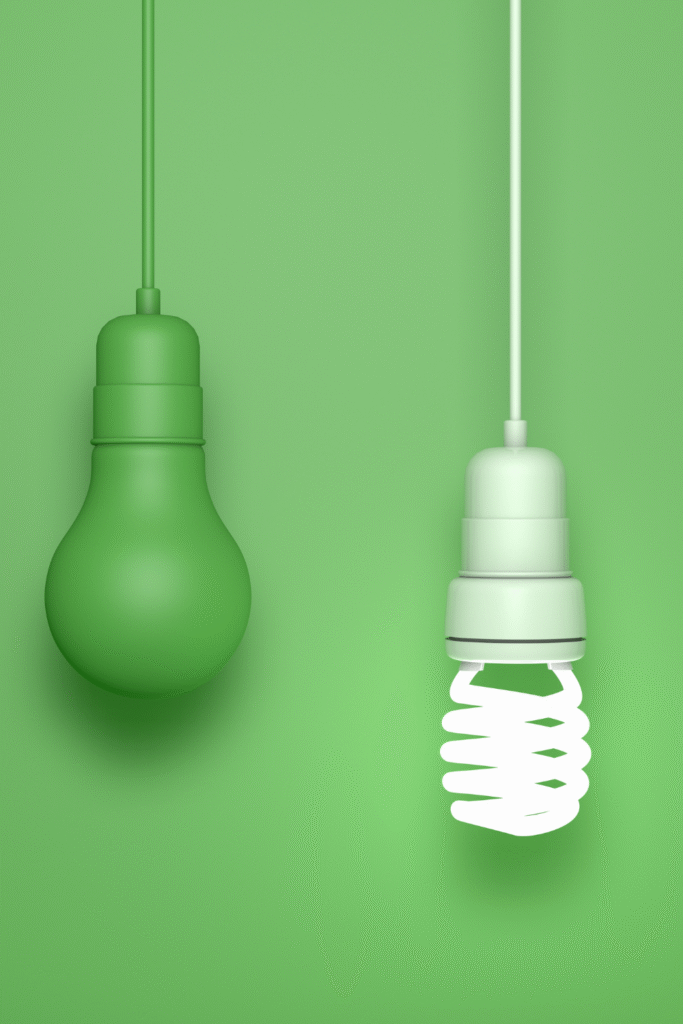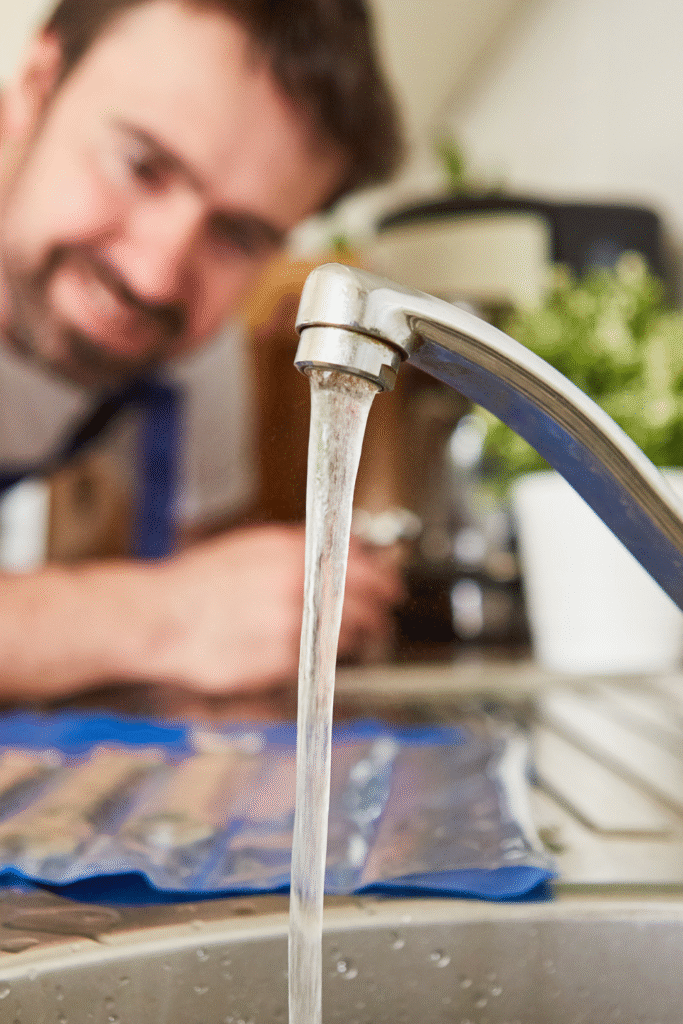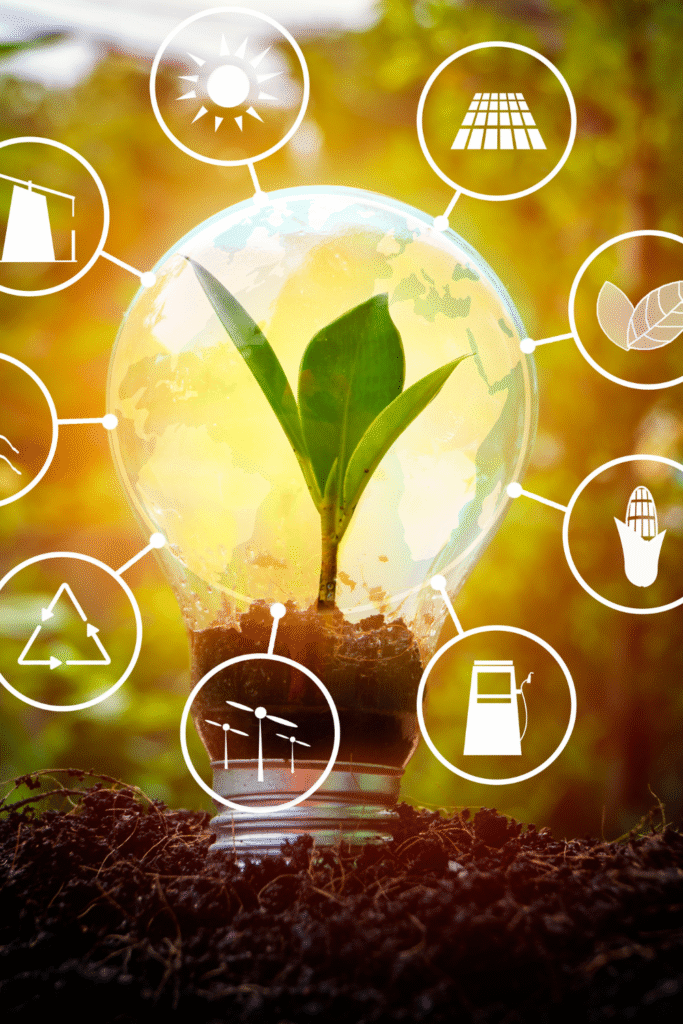Environmental wellness goes beyond recycling paper or turning off the lights. It’s about creating a harmonious relationship with your surroundings, whether you’re at home or in the office.
Making small, intentional changes can significantly reduce your ecological footprint and inspire a healthier lifestyle for yourself and others.
By integrating eco-friendly habits into your daily routine, you not only contribute to a sustainable future but also enhance your overall quality of life.
Below, we’ve compiled 10 actionable ways—5 for your home and 5 for your workplace—to promote environmental wellness effectively.
5 Ways to Improve Environmental Wellness at Home

1. Switch to Energy-Efficient Lighting
Energy-efficient lighting, such as LED or CFL bulbs, uses significantly less electricity compared to traditional incandescent bulbs. Not only do these options last much longer, reducing the need for frequent replacements, but they also help lower your energy bill over time.
Additionally, LEDs are free of toxic elements like mercury, making them safer for both your home and the environment. By making this simple switch, you can save energy, cut costs, and reduce your carbon footprint.
For added impact, ensure you switch off lights when not in use and take advantage of natural daylight to illuminate your home during the day.

2. Adopt a Zero-Waste Lifestyle
A zero-waste lifestyle focuses on minimizing waste production by adopting practices such as reusing, recycling, and composting.
Start by reducing single-use items like plastic bags, disposable cutlery, and water bottles, and replace them with reusable alternatives made of sustainable materials like stainless steel, glass, or bamboo.
Composting biodegradable waste, such as food scraps and yard trimmings, not only reduces the amount of garbage sent to landfills but also creates nutrient-rich compost for your garden.
Additionally, consider buying in bulk to avoid unnecessary packaging and supporting businesses that prioritize sustainable practices.
By making conscious choices in your daily life, you can significantly decrease your environmental impact and contribute to a cleaner planet.
Start by reducing single-use plastics from your kitchen.
Use glass jars, reusable shopping bags, and beeswax wraps for food storage. Set up a compost bin for organic waste and explore bulk shopping to minimize packaging waste.
These small changes lead to a significant reduction in landfill contributions.

3. Install Low-Flow Water Fixtures
Low-flow water fixtures are an excellent way to conserve water without sacrificing performance or convenience. These fixtures, which include low-flow showerheads, faucets, and toilets, are specifically designed to reduce water usage by limiting the flow rate while maintaining sufficient pressure.
For instance, switching to a low-flow showerhead can save up to 2.5 gallons of water per minute compared to traditional models.
Similarly, low-flow toilets use an average of 1.6 gallons per flush, significantly less than older models, which can use up to 6 gallons per flush. Installing these fixtures not only helps conserve water—a precious and limited resource—but also reduces water bills, ultimately saving money over time.
Many modern low-flow fixtures are easy to install, making them a practical and impactful upgrade for any home.
Additionally, be mindful of turning off taps when brushing your teeth or washing dishes.

4. Create a Green Living Space
Adding greenery to your living space can significantly improve air quality while creating a calming and inviting atmosphere.
Houseplants such as spider plants, peace lilies, and snake plants are not only low-maintenance but also highly effective at filtering toxins from the air. Incorporating natural materials like bamboo, cork, or reclaimed wood in your décor can further enhance the green aesthetic and promote sustainability.
Additionally, ensuring ample natural light in your living space reduces the reliance on artificial lighting, lowering energy consumption.
Small steps, such as creating a dedicated plant corner or using eco-friendly furniture, can help transform your home into a healthier, greener environment.
Choose low-maintenance options like peace lilies, pothos, or succulents.
For an added environmental boost, use natural cleaning products that avoid releasing harmful chemicals into the environment.

5. Opt for Renewable Energy Sources
Switching to renewable energy sources is one of the most impactful ways to make your home more eco-friendly. Solar panels, for instance, harness energy directly from the sun, reducing your dependence on fossil fuels and lowering your electricity bills over time.
Additionally, wind energy systems or geothermal heating can be excellent alternatives, depending on the resources available in your area.
Even small changes, like subscribing to a green energy program through your utility provider, can help support clean energy initiatives.
Investing in energy-efficient appliances, LED lighting, and smart home technology can further enhance energy savings and minimize your overall carbon footprint.
By exploring these renewable options, you contribute to a sustainable future while reducing your environmental impact.
Even smaller steps like unplugging devices not in use can make a big difference.
5 Ways to Improve Environmental Wellness at Work

1. Go Paperless When Possible
Reducing paper usage in the workplace is a simple yet effective way to improve environmental wellness. Encourage the use of digital documents, email communication, and cloud-based storage systems to minimize the need for printing.
When printing is unavoidable, opt for recycled paper and double-sided printing to reduce waste. Additionally, implementing electronic signature tools can eliminate the need for physical copies in many instances.
Transitioning to a paperless office not only conserves natural resources but also creates a more efficient and organized workflow.
If printing is unavoidable, print double-sided and recycle used sheets.
This practice not only cuts waste but can also save your organization money.

2. Create a Recycling Program
Set up clearly labeled recycling bins for paper, plastics, and metals in common spaces, and educate employees on their proper usage.
Consider IT equipment recycling programs for old computers and electronic devices.
This small step makes environmental responsibility accessible to everyone.

3. Encourage Green Commuting
Promote the use of environmentally friendly transportation options among employees. Provide incentives for carpooling, such as preferred parking spaces, or encourage the use of public transportation by offering subsidized transit passes.
Additionally, consider implementing bike-to-work initiatives or building facilities such as bike racks and showers to support those who prefer cycling.
Remote work options and flexible schedules can also reduce the need for commuting altogether, lowering the organization’s overall carbon footprint while supporting work-life balance.

4. Green Your Office Supplies
Choose sustainable and eco-friendly options when purchasing office supplies. Look for products made from recycled materials, such as paper, pens, and folders.
Opt for supplies that are reusable, refillable, or biodegradable to minimize waste. Additionally, consider buying in bulk to reduce packaging waste and the environmental impact of shipping.
Prioritizing suppliers with strong sustainability commitments or certifications can further align your office’s practices with green initiatives.

5. Optimize Energy Use in the Workplace
Optimizing energy use is not only beneficial for the environment but can also result in significant cost savings for your office. Start by conducting an energy audit to identify areas where energy is being wasted.
Simple changes like switching to energy-efficient LED lighting, which consumes less electricity and lasts longer than traditional bulbs, can make a big difference.
Install smart thermostats to regulate heating and cooling systems more effectively and only use energy when needed. Encourage employees to shut down computers, monitors, and other electronic devices at the end of the day or when not in use.
Additionally, consider investing in motion-sensor lighting in areas like restrooms, storage rooms, and hallways to reduce unnecessary electricity consumption. Implementing these strategies will create a more energy-conscious workplace and contribute to your sustainability goals.
Larger initiatives include upgrading to energy-efficient appliances and ensuring proper insulation in the office building.
Environmental Wellness Summary Table
Ways to Improve Environmental Wellness at Home
| Action | Description |
|---|---|
| Switch to Energy-Efficient Lighting | Replace incandescent bulbs with energy-efficient LEDs to reduce energy consumption and waste. |
| Adopt a Zero-Waste Lifestyle | Minimize waste by using reusable products, bulk shopping, and composting organic materials. |
| Install Low-Flow Water Fixtures | Use low-flow showerheads and faucets to conserve water without sacrificing functionality. |
| Create a Green Living Space | Add indoor plants to purify the air and use natural cleaning products to avoid harmful chemicals. |
| Opt for Renewable Energy Sources | Switch to solar panels or green electricity plans to reduce reliance on non-renewable energy. |
Ways to Improve Environmental Wellness at Work
| Action | Description |
|---|---|
| Go Paperless When Possible | Reduce paper usage by using digital documents and recycling where printing is unavoidable. |
| Create a Recycling Program | Provide clearly labeled bins for recycling and educate employees on proper disposal practices. |
| Encourage Green Commuting | Support employees in using eco-friendly transportation, like carpooling or public transit. |
| Green Your Office Supplies | Purchase sustainable items, such as recycled paper and refillable pens, to reduce environmental impact. |
| Optimize Energy Use in the Workplace | Install motion-sensitive lighting and encourage powering down devices after work hours. |
Table of Contents
- Introduction
-
- The Importance of Environmental Wellness
- 5 Ways to Improve Environmental Wellness at Home
-
- 2.1 Switch to Energy-Efficient Lighting
- 2.2 Adopt a Zero-Waste Lifestyle
- 2.3 Install Low-Flow Water Fixtures
- 2.4 Create a Green Living Space
- 2.5 Opt for Renewable Energy Sources
- 5 Ways to Improve Environmental Wellness at Work
-
- 3.1 Go Paperless When Possible
- 3.2 Create a Recycling Program
- 3.3 Encourage Green Commuting
- 3.4 Green Your Office Supplies
- 3.5 Optimize Energy Use in the Workplace
- A Call to Action for a Greener Future
A Call to Action for a Greener Future
Transforming your environment, whether at home or work, is within your reach. By implementing these 10 simple practices, you can take meaningful steps toward a more sustainable lifestyle while inspiring others to do the same.
Start small and build up—every change counts. Commit to one or two actions today, and witness the positive ripple effect it creates both for you and the environment. Together, we can make a lasting impact and foster a greener, healthier planet for generations to come.
By making these changes part of your daily routine, you’ll actively contribute to a more harmonious world—both at home and in the workplace. What step will you take first?

Environmental Wellness FAQs
1. What is environmental wellness?
Environmental wellness refers to the practice of creating harmony with your surroundings by making choices that sustain and improve the health of the planet and its ecosystems. It involves actions like conserving resources, reducing waste, and promoting sustainable living, both at home and in the workplace.
2. Why is environmental wellness important?
Environmental wellness is crucial because it directly impacts personal health, community well-being, and the planet’s future. By adopting environmentally friendly practices, we help reduce pollution, conserve natural resources, and support biodiversity, which ultimately improves the overall quality of life.
3. How can I start improving environmental wellness at home?
Start with small changes like switching to energy-efficient light bulbs, reducing single-use plastics, and conserving water. Gradually adopt more sustainable practices such as composting, using eco-friendly cleaning products, and opting for renewable energy sources when possible.
4. What are some ways to improve environmental wellness in the workplace?
Workplaces can improve environmental wellness by reducing paper usage, setting up recycling programs, and promoting eco-friendly commutes (e.g., carpooling or public transport). Employers can also optimize energy use by upgrading to energy-efficient appliances and encouraging employees to unplug devices when not in use.
5. How does environmental wellness benefit individuals?
Practicing environmental wellness leads to cleaner air, reduced exposure to toxins, and healthier living spaces. It can also enhance mental health by fostering a sense of purpose and connection with nature. Additionally, it promotes financial savings through reduced energy costs and minimized waste.
6. What are some common challenges in adopting eco-friendly practices?
Some challenges include upfront costs for renewable energy or sustainable products, lack of access to eco-friendly resources, and resistance to change from individuals or organizations. However, starting small and focusing on simple, cost-effective changes can help overcome these obstacles.
7. Are eco-friendly practices expensive to implement?
While some sustainable practices, like installing solar panels, may have high initial costs, many eco-friendly actions are affordable or even save money over time. Simple habits like reducing water usage, using energy-efficient bulbs, or recycling are low-cost ways to start.
8. How can families support environmental wellness at home?
Families can work together to adopt sustainable habits such as separating recycling, turning off unused lights, and reducing food waste by meal planning. Getting children involved in activities like gardening or composting can also foster a sense of environmental responsibility.
9. What role does technology play in improving environmental wellness?
Technology can greatly enhance environmental wellness. Smart home devices streamline energy savings, apps track sustainability efforts, and online tools reduce paper usage through digital documentation. Additionally, advancements in green technologies, such as solar panels and energy-efficient appliances, make sustainable lifestyles more accessible.
10. What can workplaces do to encourage employee engagement in environmental wellness?
Workplaces can host sustainability workshops, incentivize green commuting with bonuses or subsidies, and implement a team approach to activities like recycling or conserving energy. Regularly communicating the positive impact these actions have can motivate employees to stay engaged.
